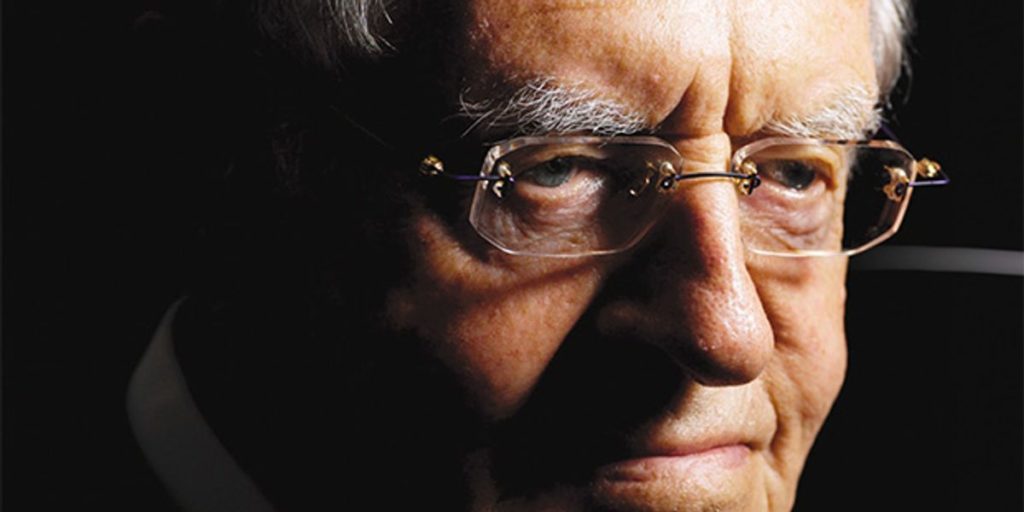Mataré argued instead that the control electrode must be injecting positive charges, called holes, into the germanium. And perhaps by trickling along the boundary between two crystal grains, he guessed, they reached the other electrode—many micrometers distant. There they would bolster the conductivity under this electrode and enhance the current through it. “Welker didn’t really understand my measurements,” Mataré says. “At the time he was too busy studying superconductivity.”
But as the two men were debating the merits of their competing interpretations, surprising news arrived from across the Atlantic. In a 30 June press conference, Bell Labs suddenly lifted its six-month veil of secrecy and announced the invention of the transistor by Bardeen, Brattain, and Shockley. The breakthrough was reported in The New York Times on 1 July and published in the 15 July issue of Physical Review. Incredibly, the Bell Labs solid-state amplifier also had a pair of closely spaced metal points prodding into a germanium surface. [See photo, “Getting to the Point.”]
Mataré soon learned Bardeen and Brattain’s explanation of the curious effects he had been observing. Electrons trapped on the germanium surface induce a shallow, positively charged layer just beneath it. Holes emitted by the control electrode (which they had dubbed the “emitter”) travel easily within this layer over to the output electrode (or “collector”), markedly boosting the conductivity beneath it and therefore the current flowing through it.
After the Bell Labs revelations, Mataré and Welker had little difficulty getting the PTT minister to visit their lab. Thomas urged them to apply for a French patent on their semiconductor triode; he also suggested they call it by a slightly different name: transistron. So the two physicists hastily wrote up a patent disclosure and passed it on to the Westinghouse lawyers.
On 13 August, the company submitted a patent application for a “Nouveau système cristallin à plusieurs électrodes réalisant des effets de [sic] relais électroniques” to the Ministry of Industry and Commerce. Its brief description of what might be happening inside the germanium mostly followed Welker’s field-effect interpretation but was probably influenced by Bardeen and Brattain’s explanations.
By the May 1949 press conference, the two Germans had the device [see X-ray image in “Invention and Inventors”] in limited production and were beginning to ship units for use by the PTT as amplifiers in the telephone system—initially in the line between Paris and Limoges. Speaking to the Paris press, Thomas compared these devices with vacuum tubes and demonstrated their use in radio receivers. Reporters hailed the two physicists as “les pères du transistron” (the fathers of the transistron). The French device “turns out…to be superior to its American counterpart,” read a more measured but still favorable account in Toute la Radio, a technical journal [see drawing and photo]. “The latter has a limited lifetime and appears to be fairly unstable, whereas the existing transistrons do not show any sign of fatigue.”
According to Mataré, this superiority could be attributed to the care they employed in fabricating their devices. While observing the process with microscopes, the women working on the small assembly line would measure current-voltage curves for both metal points with oscilloscopes and fix the points rigidly on the germanium with drops of epoxy after the curves matched the desired characteristics. When Brattain and Shockley visited the Paris group in 1950, Mataré showed them telephone amplifiers made with his transistrons—which allowed him to place a call all the way to Algiers. “That’s quite something,” admitted Shockley a bit guardedly, Mataré recalls half a century later.
But the French government and Westinghouse failed to capitalize on the technical advantages in semiconductors that they then appeared to have. After Hiroshima, nuclear physics had emerged as the dominant scientific discipline in the public mind, and nuclear power was widely heralded as the wave of the future. France became enchanted with pursuing the nuclear genie unbottled in the 1940s, while ignorant of its promising transistron.
Mataré and Welker struggled on in Paris for two more years, but as support for their operation waned during the early 1950s, they started looking for jobs in their native land. In 1951 Welker accepted a post at Siemens in Erlangen, Germany, where he pioneered early research on III-V compound semiconductors, such as gallium arsenide. In the late 1950s and early 1960s, those materials fostered a small optoelectronics revolution in semiconductor lasers and light-emitting diodes. Welker became head of all R&D projects at Siemens in 1969 and retired in 1977. He died in 1981.
In 1952, with solid funding from a wealthy German businessman, Jakob Michael, Mataré moved to Düsseldorf, Germany, and founded a company called Intermetall. It began manufacturing germanium rectifiers and transistors similar to the point-contact devices he had made in Paris. The company bought or built equipment that helped it produce semiconductor devices of even higher quality.
The summit of Intermetall’s achievements came at the 1953 Düsseldorf Radio Fair. There a young, dark-haired woman demonstrated what was probably the world’s first transistor radio, built around four Intermetall point-contact transistors [see photo, “Tuning In”] more than a year before Texas Instruments Inc., in Dallas, publicly claimed that milestone for itself.
But after Michael sold the firm to Clevite Corp., then in Cleveland, later that year, its focus shifted almost exclusively to production and away from research. Discouraged by that about-face, Mataré left Germany and immigrated to the United States, where he found work in the U.S. semiconductor industry. Even today, at 93, the IEEE Life Fellow remains active, consulting from his Malibu home on such projects as a large, innovative photovoltaic array built in Southern California [see The Back Story, in this issue].


